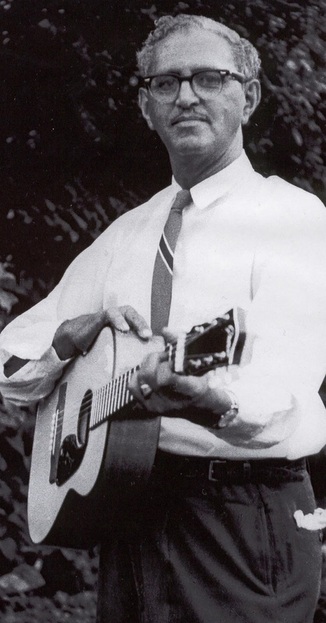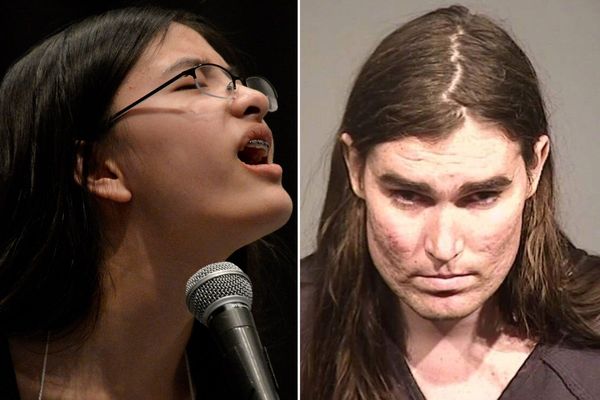As a filmmaker, Ken Burns sees himself as a uniter and not a divider—an admirable endeavor in these polarized times, but not always a successful one. His 2017 Vietnam series was a flawed attempt at uniting anti-war dissenters and pro-war hawks in an overall view of the Vietnam conflict as simply a noble mistake. Burns’ consensus-based approach to filmmaking too often relies on the patriotism-stirring power of myth rather than factual historical discourse. And yes, his upcoming PBS epic, Country Music, continues Burns’ life’s work of reinforcing American exceptionalism. Yet compared to his biased, constricted Jazz (2001), Burns’ eight-part, 16-hour extended history of country music finds the filmmaker-historian at his most even-handed, open-minded, and ideologically inclusive.
The series begins its wide chronological arc in 1927—when country music was essentially Appalachian hillbilly music—and ends somewhat arbitrarily in 1996, a time when popular country had inexplicably morphed into gentrified twang pop. All the familiar Burnsian tropes are in play: the endless celebrity talking heads; still photos coming to life through camera zooms and pans (aka the Ken Burns Effect); the hypnotic, droning voiceover of Peter Coyote. Despite overuse of his own documentary template, Burns still manages to be slightly subversive. Jazz’s gumbo-like mix of musical influences is no mystery to even the most untrained ear; fewer know that country also has diverse and tangled roots, a disparity the film seeks to correct. Just after Brownsville native Kris Kristofferson declares in the opening episode that country is “white man’s soul music,” Burns swiftly cuts to pathbreaking African American country singer Charley Pride, who proposes a more liberal definition: “Any song that’ll help you feel better.” With the recent “Old Town Road” controversy still fresh in mind, this acknowledgment is not only welcome, but necessary.

From here, Burns does his level best to dispel notions of country music as being a culturally one-dimensional musical form. While white stars like the Carter Family, Jimmie Rodgers, Hank Williams, Bill Monroe, and Johnny Cash are rightfully given their place in the pantheon of greats, Burns reminds us that these legends had mentors, too—and most of them were African American. The patriarch of country music’s “first” family, A. P. Carter, learned his trade from African American musician Lesley Riddle; Hank Williams Sr. taught himself to play with the help of a black street performer named Rufus “Tee Tot” Payne; and Johnny Cash received life-changing tutelage from jug-band maestro Gus Cannon. Also commendable is the film’s acknowledgment of the impact soul legend Ray Charles had on country music. Burns additionally gives well-deserved props to the Tex-Mex borderlands’ influence on country—embodied in crossover Tejano-conjunto pop artists like Texas natives Johnny Rodriguez, Freddy Fender, and Flaco Jimenez.
The film covers all of country music’s major movements in style, content, musicianship, and attitude, beginning with the spread of its musical DNA across America during the Depression years via radio. Country music’s ongoing modernization is dealt with fairly comprehensively—especially its unholy alliances with electric rock, folk, and pop. And if there’s one individual artist in Burns’ series who represents the story of country music itself, it’s Johnny Cash: Cash survived nearly six volatile decades in the business, and his music sonically embodied the authentic roots of country but also transcended such categorizations when it needed to. Also given their due are the major movements away from stuffy Nashville orthodoxy. The 1960s Bakersfield sound—marked by the hardscrabble dustbowl tunes of Merle Haggard and the rock-and-roll attitude of Buck Owens—is properly feted. Same goes for the Texan-led anti-Nashville “outlaw” uprising in the 1970s, an eclectic movement whose wide embrace included jazz-influenced Willie Nelson, speed-fueled country-punk Waylon Jennings, and artfully damaged Texan country-folk troubadours like Townes Van Zandt and Guy Clark.
What eventually takes shape is a portrait of a deceptively simple musical form that had as much potential to express nostalgic conservatism as it had to be musically iconoclastic and politically radical. Sure, country music might have been the genre of choice for Nixon’s “silent majority,” but it was also inclusive enough for the feminist anthems of Dolly Parton and Loretta Lynn. In the late 1960s bluegrass was surprisingly co-opted by left-leaning college students—and embraced by the burgeoning New Hollywood in movies like Bonnie and Clyde and Deliverance. The film even includes footage of banjo virtuoso Earl Scruggs lending his talents to an antiwar protest in the late 1960s.
Burns tiptoes around the divisive rhetoric that often comes with classic vs. new country comparisons, as the series moves into the 1980s and ’90s—a time when popular country was becoming more detached from its African American and Irish immigrant gut-string roots than ever. The film maintains a shaky ambivalence when it comes to the late 20th century’s stable of glam-country acts, led by Oklahoma State marketing major Garth Brooks. This fashionable line of prefabricated “countrypolitan” singers—also including Clint Black, Vince Gill, George Strait, Reba McIntyre, and the Judds—devoted their careers to smoothing over those same rough multicultural edges that this documentary so enthusiastically celebrates.
Although Burns and his series writer Dayton Duncan never openly demonize the bloated Nashville sound of the 1990s, you get the sense that deep down they’d like to. The final episode does take a noticeably critical stance on media mergers and the rise of Clinton-era corporate greed (see the 1996 Telecommunications Act). These unfortunate developments whittled country music’s “complicated chorus of American voices” down to a handful of bestselling Billy Ray Cyruses and Shania Twains, who would dutifully keep things light and line-danceable. Country Music ultimately leaves us with the vague inference that what passed for country music in the ’90s represented the genre’s last historically significant growth spurt. And this so-called “new country” was only egalitarian in one sense: The music was no longer solely the property of the working class. Now, for better or worse, investment bankers and orthodontists could be a little bit country, too.
Read more from the Observer:
-
At Home in the World: Houston artist Prince Varughese Thomas blurs boundaries of politics, medium, and identity.
-
‘Seadrift’ Dredges Up a Little-Known—and Deeply Disturbing—Texas Story: An electrifying new documentary captures a forgotten conflict in the sleepy coastal community of Seadrift.
-
The Symphony Comes to South Dallas: Music education and enrichment opportunities are scarce in my neighborhood, but the Dallas Symphony aims to bridge the gap.







